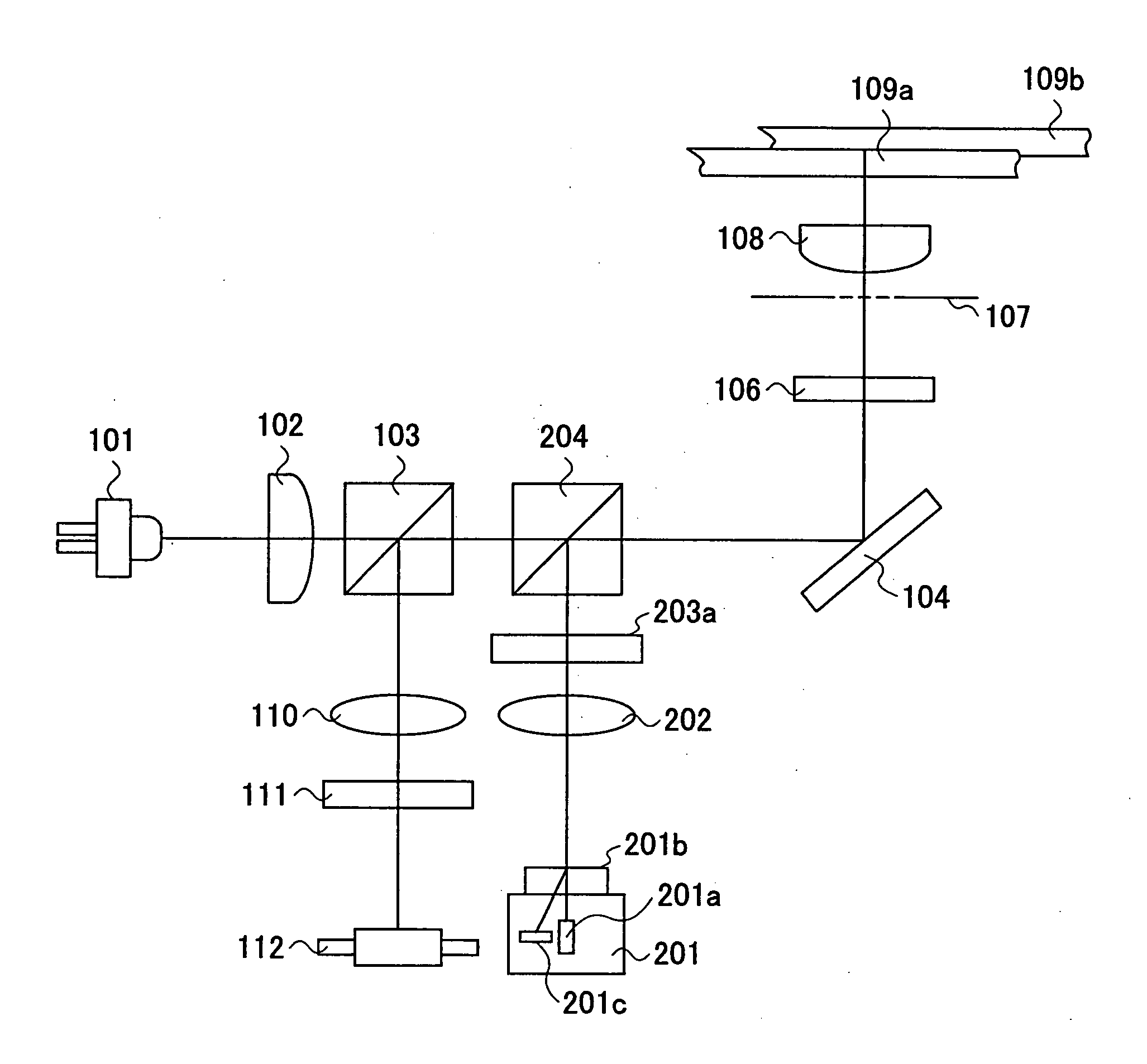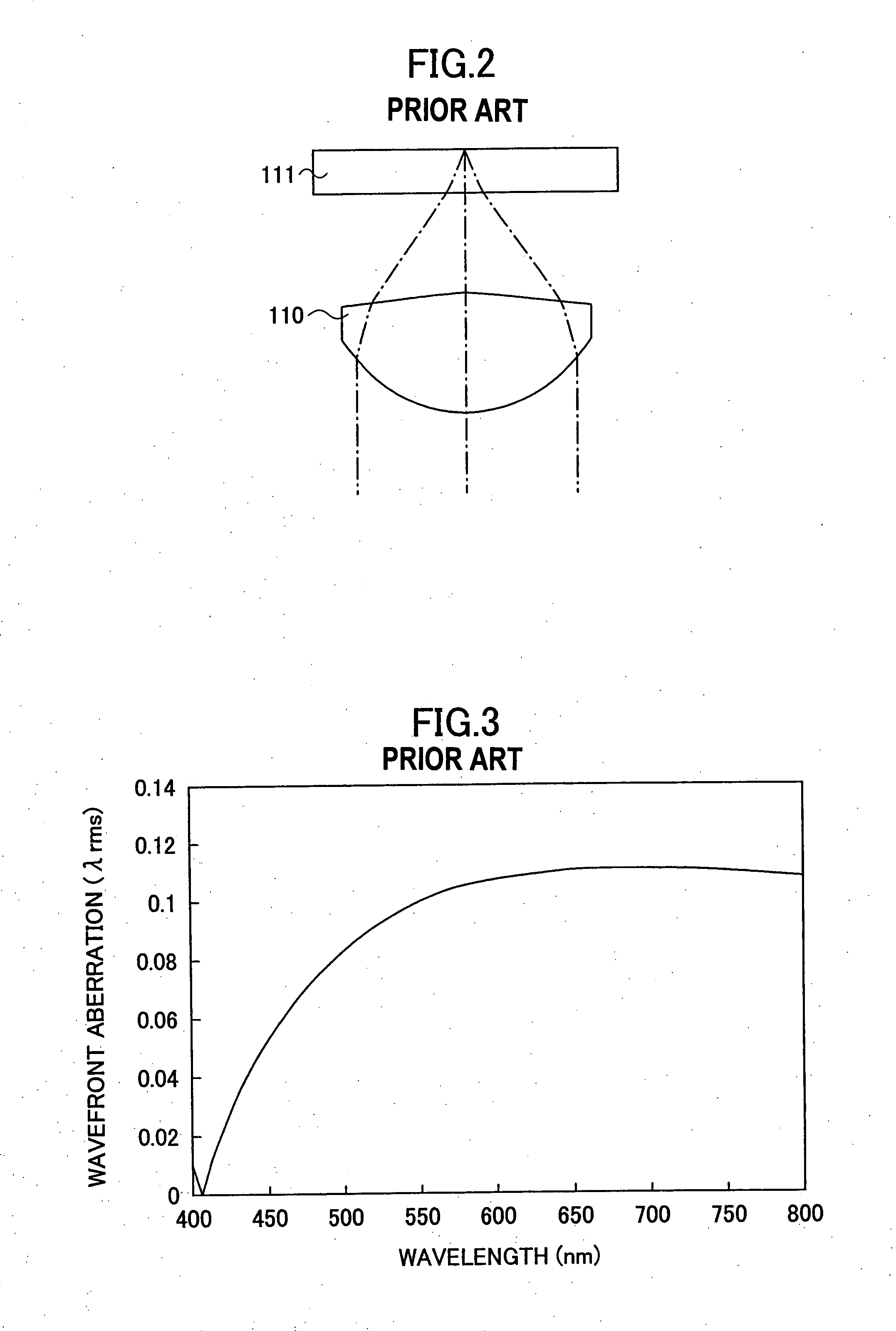Objective lens, optical pickup, and optical information processing apparatus using the same
a technology of optical information processing apparatus and objective lens, which is applied in the field of optical information professing, can solve the problems of increasing the weight of the construction that uses two lenses, the numerical aperture value change between the optical recording media of different specifications, and the construction is contradictory to the requirement of downsizing and cost reduction
- Summary
- Abstract
- Description
- Claims
- Application Information
AI Technical Summary
Benefits of technology
Problems solved by technology
Method used
Image
Examples
first embodiment
[0213]FIG. 7 is a diagram showing the schematic construction of an optical pickup according to a first embodiment of the present invention capable of carrying out any of recording, playback and erasing of information to and from any of: a blue optical recording medium having a substrate thickness of 0.6 mm at the side where an optical irradiation is made and designed for use with an optical source having a wavelength of 407 nm and an optical system having a numerical aperture value NA of 0.67; and a DVD optical recording medium having a substrate thickness of 0.6 mm at the side where an optical irradiation is made and designed for use with an optical source having a wavelength of 660 nm and an optical system having a numerical aperture value NA of 0.65.
[0214] While the technology of the blue generation optical recording technology addressed in the first embodiment of the present invention is still in the process of consolidation, the present embodiment will be explained for an exem...
example 1
[0243] Next, an optical pickup equipped with a phase compensation element that uses optical diffraction for the compensation element of the spherical aberration will be explained with reference to FIG. 7 as Example 1 of the present invention.
[0244] In the case an optical spot is formed on a DVD recording medium 109 by using an optical beam having a wavelength of 660 nm together with the single objective lens 108, which is optimized such that the wavefront aberration becomes minimum for the optical beam having the wavelength of 407 nm, by supplying the foregoing optical beam of the 660 nm wavelength to the objective lens 108 via an infinite optical system, there arises a spherical aberration shown in FIG. 12B due to the difference in the wavelength. It should be noted that FIG. 12B shows the wavefront aberration at the wavelength of 407 nm.
[0245] Thus, in Example 1, the optical pickup uses a finite optical system for DVD and further provides the phase compensation element 203a in s...
example 2
[0265]FIG. 15 is a diagram showing the schematic construction of the optical pickup according to Example 2 of the present invention.
[0266] Referring to FIG. 15, Example 2 shows an optical pickup capable of carrying out recording, playback and erasing of information to and from any of the blue optical recording medium by using the wavelength band of 407 nm, numerical aperture value NA of 0.67 and the substrate thickness of 0.6 mm at the side to which the optical irradiation is made and the red optical recording medium by using the wavelength band of 660 nm, numerical aperture value NA of 0.65 and the thickness of 0.6 mm at the side to which the optical irradiation is made.
[0267] The difference of the optical pickup of FIG. 15 over the optical pickup of FIG. 7 is in the point that a phase compensation element of stepped shape shown in FIG. 16 is used in place of the phase compensation element 203a having a blazed pitch pattern shown in FIG. 14B. Associated with this, the present exa...
PUM
| Property | Measurement | Unit |
|---|---|---|
| wavelength | aaaaa | aaaaa |
| wavelength range | aaaaa | aaaaa |
| wavelength range | aaaaa | aaaaa |
Abstract
Description
Claims
Application Information
 Login to View More
Login to View More - R&D
- Intellectual Property
- Life Sciences
- Materials
- Tech Scout
- Unparalleled Data Quality
- Higher Quality Content
- 60% Fewer Hallucinations
Browse by: Latest US Patents, China's latest patents, Technical Efficacy Thesaurus, Application Domain, Technology Topic, Popular Technical Reports.
© 2025 PatSnap. All rights reserved.Legal|Privacy policy|Modern Slavery Act Transparency Statement|Sitemap|About US| Contact US: help@patsnap.com



